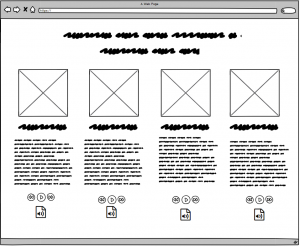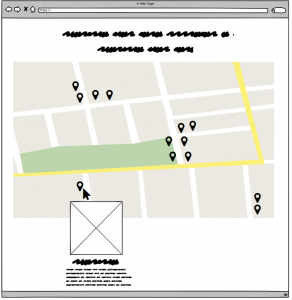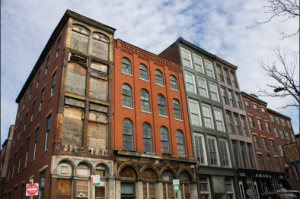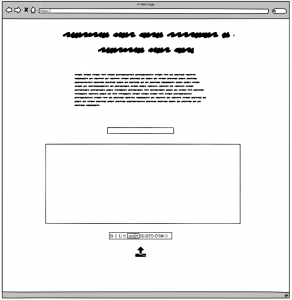Project Plan
Thanks to the skills I have learned in my Digital History class this semester at Temple, I am now ready to take on the task of creating a digital project that will be of benefit to me and my current academic needs. Because I am beginning to dive into my master’s thesis research, the creation of a digital project would be a practical implication of the digital skills I have gained. Therefore, for my proposed digital project, I have decided to create a website that will help me walk through and share my thesis research. My masters thesis will be focusing on the multitude of Lumbee families and individuals who migrated from Robeson and surrounding counties in North Carolina to northern urban centers, specifically Philadelphia, following the Second World War. Though Philadelphia was a popular destination for these migrants, there is a lack of scholarship on Lumbee experiences in Philadelphia. Through my research, I am attempting to find as much information as I can that documents the Lumbee experience in Philadelphia. In order to understand these experiences, I see the need to map significant locations associated with Lumbee identity in Philadelphia. While I originally proposed a crowdsourced mapping project, where Lumbee individuals could map their experiences, the potential risks and lack of tools prevent me from taking on such as task. Therefore, I have re-imagined my proposed digital history project.
Project Delivery
I have decided to create a project website that will incorporate a variety of digital history tools, all of which will add to the narrative of the Lumbee experience in Philadelphia. I will begin with creating a website using WordPress (here it is, though there is not much on it yet). The website will include informational pages that describe the project and my personal bio. The site’s homepage will feature a blog, in which I will give updates on my research. These blog posts are a great way to reach and spark interest to a public audience. The hope is that people will be interested in the content of my blog and explore the other components of the website. The site will also include a page dedicated to the oral history project that I am doing for my research. This page is not necessarily a place to store all of my oral history interviews, but rather a curated space where the public can interact with a selection of interview material. I don’t expect site visitors to want to listen to hours worth of oral history material, but I will gladly point visitors to where they can access the full collection of interviews. See this example of oral history being presented by the Southern Foodways Alliance.

Wireframe of a Digital Oral History Exhibit
The website will also contain a page dedicated to mapping significant places involving Lumbee history in Philadelphia. This mapping will be created through knight lab’s Story Map program. This program is free, interactive, and fairly easy to use. Based on the data I collect from my own research, I will be able to identify the locations of historical significance, which users will be able to explore. The Story Map program also allows photographs to be attached to place markers, which is a good way to visualize these places.

Wireframe of Mapping Component
Here is a prime example of a location that could be mapped through Story Map.

This building, located at 225 Chestnut St., was once the home of the United American Indians of the Delaware Valley. This building was the center of Philadelphia’s American Indian community, including many Lumbees.
Another important component of this project is inviting members of the Lumbee community to participate in this research and to give people the opportunity to share their own stories, experiences, and thoughts. Though I don’t think the crowdsourced mapping idea will work, I have thought of an alternative way to map peoples’ individual experiences. In addition to the mapping of important Philadelphia sites, I will create a Google Form on my website that will allow individuals to share ideas, stories, places, photographs, etc. they would like to add to this project. With their permission, I will be able to add more sites to the mapping component mentioned above.

Google Forms is an Easy Way to Gather Information From People

Sample of a Page where Individuals Can Write and Upload Photographs
Work Plan and Tasks
Create the website
Create pages for blog, oral history, mapping, and collaboration
Managing Time and Deadlines
-
- Website Created by the end of April 2019
- Pages Created by the end of April 2019
- Start Blogging by the beginning May 2019
- Set up Google Forms for community input by June 2019
- Oral History Component to be completed by October 2019
- Mapping Component to be completed by March 2020
- Whole project to be completed by May 2020
Evaluation of Success
No digital history project is complete without an evaluation. Obviously, since this website will be part of my master’s thesis, it will be evaluated in that context. However, I want to reach beyond the evaluation of academia, as I sincerely value community input. To do this, I plan on sharing the project with the Lumbee community, especially the individuals whose lives are represented in this project. Sharing this project with the Lumbee community and accepting feedback will ensure transparency. I will also weigh the project’s success based on how many people interact with the site. This can be accessed through website statistics and simply by word of mouth in the Lumbee community. If people are talking about it, it means they have interacted with it, which is my goal. In order to ensure the sustainability of my project, I will have to look into transferring the content of my website to a more stable platform instead of through Temple’s WordPress sites.
